Pest vs. Disease: AI Detection Methods
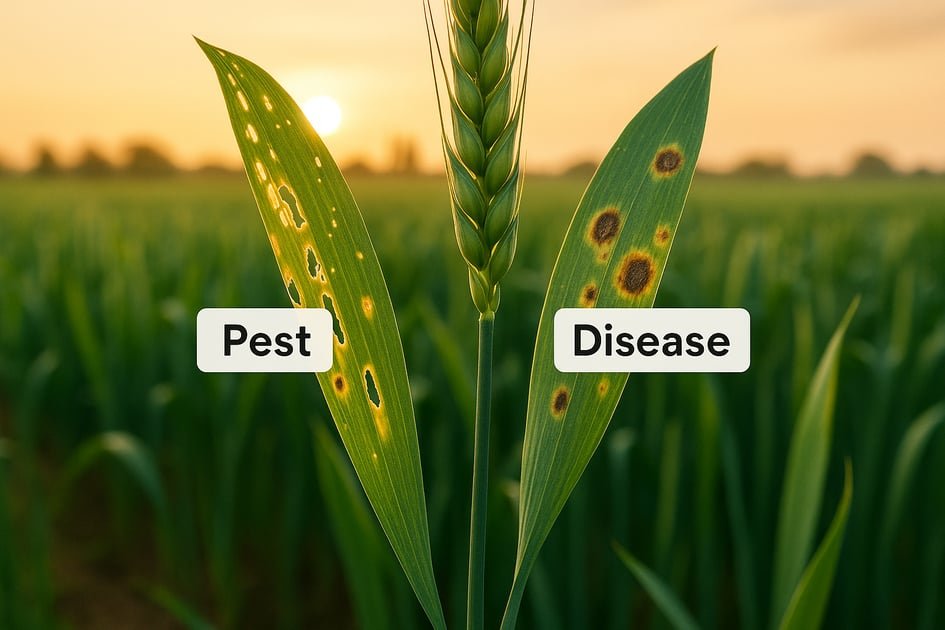
AI is transforming how we diagnose and manage plant health issues, offering faster and more precise solutions compared to traditional methods. When it comes to identifying pests and diseases, understanding their differences is key: pests are mobile organisms like insects that cause physical damage, while diseases are caused by pathogens like fungi or bacteria and often spread systematically. AI tools address these challenges using tailored methods:
Key Takeaways:
- Pest Detection: Uses computer vision, smart traps, and predictive models to monitor and identify pests in real-time. Best for spotting visible, mobile threats like insects.
- Disease Detection: Relies on image analysis and environmental data to identify subtle symptoms and predict outbreaks. Ideal for addressing infections like fungal or bacterial diseases.
Quick Overview:
- Pests: Physical damage (holes, chewed edges), irregular patterns, seasonal activity.
- Diseases: Discoloration, wilting, abnormal growth, often systemic.
AI systems combine image analysis, motion tracking, and environmental monitoring to distinguish between these threats, offering early detection and actionable insights. Whether you're managing a small garden or a large farm, integrating pest and disease detection tools can protect your plants and improve outcomes.
Using AI to Identify Plant Disease, Track Insect Infestations, and Improve Food Security

Pests vs. Diseases: What's the Difference
Understanding the distinction between pests and diseases is crucial for keeping plants healthy. While both can wreak havoc on gardens and crops, they represent entirely different threats and require unique detection methods.
Pests are living organisms, such as insects or wildlife, that physically harm plants. They feed on leaves, stems, roots, or fruits, leaving behind visible damage. Pests are mobile, often seasonal, and their damage tends to be irregular and localized. Think of caterpillars chewing through tomato leaves or aphids clustering on new growth - these are classic examples of pest activity.
Plant diseases, in contrast, are caused by pathogens like fungi, bacteria, or viruses that infect plant tissues. These pathogens spread internally, often through the plant's vascular system, or externally across surfaces, leading to systematic infections. Examples include fungal diseases like powdery mildew, bacterial infections like fire blight, and viral issues such as tobacco mosaic virus.
How Pests and Diseases Differ
The damage caused by pests and diseases has distinct characteristics, which AI detection systems use to differentiate between them. Pest damage typically involves physical injuries - holes in leaves, chewed edges, or missing parts of the plant. For instance, caterpillar feeding leaves irregular holes in leaves, while aphids leave behind visible colonies and waste. These patterns are often localized and follow the pests' feeding habits.
Disease symptoms, however, tend to affect the plant as a whole. They manifest as discoloration, wilting, or abnormal growth. For example, fungal infections like black spot on roses create circular lesions with defined edges. Bacterial infections might cause water-soaked spots with yellow halos, and viral diseases often result in mosaic patterns or distorted leaves.
These differences mean AI systems need tailored approaches. For pests, detection often involves tracking movement and identifying physical damage. For diseases, AI focuses on analyzing color changes, texture variations, and patterns of spread within plant tissues.
The mobility of pests adds another layer of complexity. Pests move around, so motion sensors and behavioral analysis are key for detection. Diseases, on the other hand, stay stationary but spread predictably through plant tissues, requiring AI to monitor progression and environmental conditions that favor their growth.
When Symptoms Overlap
Sometimes, pest damage and disease symptoms can look similar, making diagnosis tricky. For example, both spider mite feeding and fungal infections can cause yellow or bronze spots on leaves, while both aphid infestations and viral diseases can lead to stunted, distorted growth.
AI systems tackle these challenges by drawing on multiple data sources. While human observers rely heavily on visible symptoms, AI can analyze additional factors like environmental conditions, growth patterns, and microscopic details. For instance, AI might detect that leaf spots have the scattered, irregular pattern typical of thrips damage, as opposed to the circular, expanding spots caused by fungi.
Environmental context also plays a critical role. Fungi thrive in specific humidity and temperature ranges, while pest populations follow seasonal cycles. Modern AI tools even use spectral analysis to identify subtle differences in how diseased or pest-damaged tissues reflect light - something the human eye can't detect. By combining weather data, soil conditions, and historical trends, AI can provide a more accurate diagnosis.
What sets AI apart is its ability to process massive datasets instantly. While a human expert might need days to observe symptom progression and reach a conclusion, AI can analyze patterns, environmental factors, and historical data within seconds, offering quick and reliable identification. This speed and precision make AI an invaluable tool for plant care.
AI Methods for Detecting Pests
AI is revolutionizing pest detection by enabling continuous monitoring of farms and gardens through tools like computer vision, sensor networks, and predictive analytics. Here’s a closer look at three key AI-powered methods that are making pest management more efficient.
Computer Vision for Pest Identification
AI-driven object detection models, such as YOLO, play a central role in identifying pests. These models process images from drones, stationary cameras, or automated traps to recognize different pest species in real time. Using neural networks trained on vast, diverse image datasets, they can distinguish between species with impressive precision. This rapid image analysis is ideal for large-scale monitoring, though challenges like poor lighting, bad weather, or detecting pests in early life stages can affect accuracy. Another hurdle is the need for comprehensive, high-quality labeled image datasets to build reliable models.
In addition to image analysis, physical traps integrated with AI systems enhance real-time pest tracking.
Smart Traps and Sensor Monitoring
Smart traps combine traditional pest attractants with AI-powered identification systems. Equipped with cameras and sensors, these traps capture images at regular intervals. AI algorithms then analyze the images to detect and count pest species. Alongside visual data, sensors monitor environmental factors like temperature and humidity, which influence pest activity. For instance, certain insects are more active within specific temperature ranges. Motion and acoustic sensors further boost detection capabilities. While these systems provide continuous monitoring and early warnings, they do require regular maintenance to ensure consistent performance.
To complement these tools, predictive models offer a forward-looking approach to pest management.
Predicting Pest Outbreaks
Predictive AI models are transforming pest control by analyzing multiple data sources to anticipate outbreaks. These models use weather data, pest life cycles, historical trends, and trap information to predict pest activity. Factors like temperature, rainfall, and humidity are crucial for determining conditions that encourage pest reproduction or migration. Degree-day calculations help estimate key stages in pest development, allowing for timely interventions. By incorporating satellite imagery and regional data, these models can pinpoint areas at higher risk. While these forecasts provide valuable lead time for action, their accuracy can be affected by unexpected weather patterns or emerging pest species.
Additionally, these forecasting tools can integrate into broader garden planning systems, providing insights on plant selection, optimal planting times, and pest management strategies. Together, these AI methods strengthen early detection efforts, minimize crop losses, and support timely, informed decision-making.
🚀 Ready to Reinvent Your Garden?
Join thousands of homeowners who have transformed their gardens using our AI design tool. Upload one photo to explore endless possibilities.
Get your AI garden designs →AI Methods for Detecting Plant Diseases
AI has become a powerful tool for identifying plant diseases by analyzing visible symptoms and environmental factors. These technologies excel at spotting subtle changes in plant health that might go unnoticed by the human eye, enabling early action before diseases spread across gardens or crops. Let’s dive into how image analysis and environmental data work together to provide accurate disease detection.
Image Analysis for Disease Symptoms
Machine learning models designed for plant disease detection analyze photos of plants to identify signs of infection. These systems look for telltale symptoms such as leaf spots, discoloration, wilting, and unusual growth patterns. By comparing uploaded images to extensive databases of known disease symptoms, these tools can pinpoint specific issues.
At the heart of many of these systems are Convolutional Neural Networks (CNNs). These models examine pixel patterns, color shifts, and texture variations on leaves, making it possible to distinguish between conditions that might appear similar at first glance - like nutrient deficiencies versus fungal infections. They achieve this by focusing on even the smallest differences in symptom presentation.
However, the accuracy of image-based detection depends heavily on the quality of the photos. Clear, well-lit images taken from multiple angles yield much better results than blurry or poorly lit ones. For early-stage diseases, where symptoms are faint or resemble environmental stress, some systems incorporate spectral analysis. This advanced technique can detect subtle changes, alerting users before symptoms become obvious.
Using Location and Environmental Data
While image analysis focuses on visible symptoms, integrating location and environmental data adds critical context. Many disease detection apps collect GPS information, planting dates, and local conditions to refine their diagnoses. This location-based approach allows AI systems to factor in regional disease trends and seasonal outbreaks.
Weather data plays a key role in enhancing detection accuracy. For instance, fungal diseases like powdery mildew thrive under specific humidity and temperature conditions, while bacterial infections often follow periods of high moisture. AI systems can evaluate these environmental factors to predict the likelihood of certain diseases.
Soil data also provides valuable insights. Elements like pH levels, moisture content, and nutrient availability directly impact plant health and susceptibility to disease. Some detection systems even integrate soil sensor readings or user-submitted soil test results, helping to distinguish between nutrient imbalances and actual infections.
Geographic disease tracking adds another layer of utility. When multiple users in a region report similar symptoms, AI systems can identify emerging outbreaks and alert nearby gardeners. This enables communities to take coordinated action and prevent larger crop losses.
Combining Multiple Data Types
The most effective disease detection systems combine visual analysis with environmental and temporal data to create a well-rounded diagnostic process. This multi-faceted approach not only improves accuracy but also supports timely interventions, reinforcing the importance of early detection.
Temporal analysis involves tracking symptom changes over time through sequential images. This allows AI to differentiate between temporary stress and infections that require immediate attention. For example, observing how symptoms evolve can help determine whether a plant is recovering or deteriorating.
Weather pattern analysis adds another layer of precision. Some diseases, like late blight in tomatoes, are closely linked to specific weather conditions, such as warm days followed by cool, damp nights. By examining past weather data, AI systems can better predict and diagnose these issues.
Plant variety and growth stage also influence disease detection. Different cultivars have varying levels of resistance, and symptoms may appear differently depending on the plant’s maturity. By incorporating this data, AI systems can fine-tune their diagnoses for greater accuracy.
Integration with garden management tools takes disease detection a step further. When connected to platforms like AIGardenPlanner, these systems can provide actionable recommendations, such as when to treat affected plants, how to prevent future outbreaks, and which disease-resistant varieties to plant. This transforms AI-powered disease detection from a reactive tool into a proactive solution for maintaining garden health.
sbb-itb-4d6a8dd
Performance Comparison: Accuracy, Speed, and Data Needs
When deciding between AI-driven pest and disease detection systems, it’s essential to understand how they perform in different gardening scenarios. By comparing key metrics like accuracy, speed, and data requirements, we can better grasp the strengths and limitations of each approach. Each system has its trade-offs, which can influence how well they fit into real-world gardening practices.
Accuracy Rates and Reliability
Pest detection systems are great at spotting large, visually distinct insects but can struggle with smaller pests or early infestations. Factors like lighting conditions can also affect their accuracy. For example, systems trained on outdoor images under natural light may falter when used in dimly lit greenhouses or indoor setups. Additionally, subtle differences between species can sometimes trip up these models, making them less reliable for identifying pests with similar appearances.
Disease detection platforms, on the other hand, tend to perform well when diagnosing diseases that show clear, advanced symptoms. They often incorporate environmental data, like humidity or temperature, to distinguish between conditions that might look alike. However, spotting diseases in their early stages is a tougher challenge. Similar symptoms - such as yellowing leaves - could stem from unrelated issues like overwatering or nutrient deficiencies. Plant variety also plays a role, as the same disease might look different across species, requiring the models to handle a wide range of visual cues.
These differences in accuracy naturally lead to variations in how quickly these systems can process data and provide feedback.
Processing Speed and Response Time
Pest detection systems are designed for real-time monitoring, providing instant alerts to help gardeners act quickly against potential infestations. This speed is especially valuable when dealing with pests that can cause significant damage in a short amount of time.
Disease detection platforms, including mobile apps, can deliver rapid photo-based diagnoses, enabling gardeners to take immediate steps. However, more advanced systems that factor in environmental data - like weather patterns or soil conditions - may take slightly longer to process results. Connectivity can also play a role: local systems often maintain steady speeds, while cloud-based platforms might experience minor delays depending on internet quality.
Training Data and Model Development
Both pest and disease detection systems rely heavily on extensive, regularly updated datasets to stay effective. Pest detection models need a wide variety of images and videos captured under different conditions to account for variability in lighting, pest size, and surroundings. Regular updates are crucial to adapt to seasonal changes and the emergence of new pests.
Disease detection models require even more diverse datasets, as they must account for how symptoms can vary across different plant species and growth stages. These platforms often combine visual data with inputs like soil composition, weather trends, and regional factors to improve their diagnostic accuracy. While this added complexity can enhance performance, it also increases the need for robust data integration and more powerful processing capabilities. Regular refinement of these models is essential to ensure they remain effective in diverse gardening environments.
Real-World Applications and Use Cases
AI detection methods are reshaping pest and disease management, providing practical solutions for both gardeners and farmers.
Pest Control in Greenhouses and Fields
Greenhouses are now equipped with smart trap systems that use AI-powered cameras to monitor and count pests in real time. Operators can track multiple traps simultaneously through centralized dashboards, enabling them to detect infestations early - before they spread across the facility.
For larger fields, drones equipped with high-resolution cameras capture detailed images, which AI systems analyze for pest activity. This approach is particularly effective for spotting larger pests, like caterpillars or beetles, across expansive areas of crops.
By combining smart traps with drone surveys, farmers can create an interconnected network that pinpoints problem areas. This allows for precise treatments, cutting down on pesticide use and lowering costs.
Additionally, sensor networks play a critical role in pest prevention. Devices measuring temperature, humidity, and soil moisture feed data into AI models that predict when conditions are ripe for pest outbreaks, giving farmers a chance to act proactively.
These advancements in pest control pave the way for equally sophisticated methods in disease management.
Disease Management for Crops and Gardens
AI-powered tools are making disease management more accessible, even for home gardeners. Mobile diagnostic apps allow users to photograph affected plants, with AI analyzing the symptoms to suggest potential diseases. Many of these apps also recommend treatments and connect users with local agricultural extension services for further assistance.
For more comprehensive solutions, weather-integrated systems combine visual diagnostics with environmental data. These platforms monitor factors like humidity, rainfall, and temperature fluctuations that encourage disease development, helping predict disease spread and offering precise diagnoses.
In the field, continuous monitoring systems detect early signs of plant diseases. This real-time detection is key to addressing issues when treatments are most effective.
Some advanced systems even integrate soil analysis with visual symptom data. This dual approach helps differentiate between diseases and nutrient deficiencies, reducing errors and ensuring the right treatment is applied.
Beyond immediate pest and disease detection, AI insights are proving valuable in planning for the future.
Working with Garden Planning Tools
The data collected by AI detection systems doesn’t just solve immediate problems - it also informs smarter long-term decisions. If monitoring consistently identifies recurring pest or disease issues in specific areas, gardeners can use that information to adjust plant selection or modify garden layouts in future seasons.
Local pest and disease data also refine climate-based recommendations. For instance, if AI monitoring reveals persistent fungal diseases in humid areas of your garden, you can opt for disease-resistant plant varieties better suited to those conditions.
AI insights can also guide companion planting strategies, helping repel pests and reduce future infestations naturally.
Platforms like AIGardenPlanner take this a step further by combining local pest and disease trends with climate data to optimize planting decisions. By understanding both the ideal growing conditions for specific plants and the common challenges in your area, you can make smarter choices about plant placement, spacing, and variety selection to reduce risks and boost success.
Even the timing of planting can improve with AI guidance. If monitoring shows that certain diseases are more likely during specific weather conditions, you can adjust planting schedules to avoid vulnerable growth stages during high-risk periods.
Pros and Cons of Each Detection Method
When it comes to early detection in gardening and farming, understanding the strengths and weaknesses of AI-powered detection methods can help you decide which system suits your needs best. Both pest detection and disease detection offer unique advantages and challenges, depending on the situation.
Pest detection systems are particularly effective at identifying visible, mobile pests. Using computer vision algorithms, these systems can quickly spot insects and larger pests. Smart traps add value by providing continuous monitoring without requiring constant human intervention. However, they can struggle with microscopic pests, and seasonal changes may impact their accuracy. Additionally, beneficial insects can sometimes be misclassified, leading to false alerts.
On the other hand, disease detection systems tackle a different set of challenges. These methods excel at identifying subtle symptoms that might go unnoticed by the human eye. By incorporating environmental data, they can even offer early warnings of potential outbreaks, giving growers a crucial head start. They are also adept at distinguishing between conditions with similar visual symptoms. However, overlapping symptoms, particularly in early stages, can lead to misdiagnoses.
Side-by-Side Comparison Table
| Factor | Pest Detection | Disease Detection |
|---|---|---|
| Accuracy | High for visible pests | Can be affected by similar symptoms |
| Processing Speed | Real-time analysis | May need more processing time |
| Best Use Cases | Greenhouses, field crops, outdoor gardens | Crop monitoring, indoor plants, home gardens |
| Data Requirements | High-quality images and movement tracking | Image data with environmental context |
| Cost | Requires investment in sensors and traps | More affordable for basic setups |
| Training Complexity | Needs diverse pest image datasets | Requires detailed symptom progression data |
| False Positives | May misidentify beneficial insects | Can misdiagnose overlapping symptoms |
| Weather Impact | Affected by adverse conditions | Less influenced by weather |
| Early Detection | Detects visible pests | Alerts possible before full symptoms develop |
| Maintenance | Regular physical upkeep | Periodic software updates |
For many growers, combining both methods offers the most comprehensive protection for plants. Pest detection is ideal for environments with recurring insect issues and when budgets allow for physical monitoring systems. Meanwhile, disease detection is better suited for managing plant health in situations where subtle or early-stage symptoms are a concern.
Ultimately, the best choice depends on your specific challenges, goals, and resources. Finding the right balance between these tools can help you create a more effective and tailored approach to plant protection.
🎨 Visualize Your Dream Garden Today!
Transform any outdoor space into a professional landscape design in minutes. Just upload a photo, choose your style, and let our AI do the rest.
Start your garden transformation now →Conclusion
Pest detection shines when it comes to real-time monitoring of obvious infestations, while disease detection focuses on identifying subtle, developing issues. The choice between the two depends on your garden's specific needs. For visible infestations, pest detection is the go-to solution, especially in controlled environments like greenhouses. On the other hand, disease detection is ideal for spotting early symptoms in crops that demand timely intervention or are grown under changing conditions.
By combining both pest and disease detection methods, you can create a well-rounded system that addresses urgent problems while preventing future ones. Whether you're designing a new garden or maintaining an existing one, integrating these tools provides a data-driven approach to healthier plants and more successful growth.
With technology in this area advancing quickly, these tools are becoming more precise and affordable. Start by addressing your garden's most pressing health concern, then consider adding a complementary method to build a more resilient system.
These strategies not only enhance immediate problem-solving but also guide long-term garden planning. For a seamless approach to pest and disease management, gardeners and landscapers can explore tools like AIGardenPlanner (https://aigardenplanner.com) to integrate both methods effectively.
FAQs
How does AI tell the difference between pest damage and plant disease symptoms when they look alike?
AI leverages cutting-edge image recognition and machine learning to tell the difference between pest damage and disease symptoms, even when they look almost identical. By examining visual cues like shape, color, patterns, and texture, it can pinpoint specific indicators tied to pests or diseases with accuracy rates often surpassing 95%.
These tools are built for speed, delivering results in real-time or close to it - a critical factor when quick action is needed. AI-powered solutions play a key role in early detection, predicting outbreaks, and offering targeted pest or disease management. This helps farmers and gardeners protect their plants with greater efficiency and precision.
How does AI improve pest and disease detection compared to traditional methods?
AI has transformed how pests and diseases are identified, offering faster, more precise, and real-time solutions. With tools like cameras, sensors, and machine learning, AI can achieve accuracy rates as high as 96%, leaving traditional manual scouting methods far behind. This not only speeds up the process but also cuts down on labor-intensive tasks.
What’s more, AI supports early detection and ongoing monitoring, giving gardeners and farmers the chance to tackle problems before they spiral out of control. By catching issues early, it reduces the reliance on heavy chemical treatments, paving the way for more sustainable and environmentally friendly pest and disease management practices.
How can AI help prevent pest and disease outbreaks in gardens or farms?
AI tools are transforming how we handle pest and disease management by offering real-time detection and early warnings. With advanced image recognition and sensor technology, these tools can spot pests or diseases in their initial stages, giving gardeners and farmers the chance to address problems before they escalate.
On top of that, AI-driven systems like automated pest traps and environmental sensors work around the clock to monitor pest activity and environmental conditions. These systems send timely alerts, allowing users to take preventative steps and minimize the risk of significant damage. By delivering precise, fast, and actionable data, AI is reshaping the way we manage the health of gardens and farms.
Related posts
Related Articles
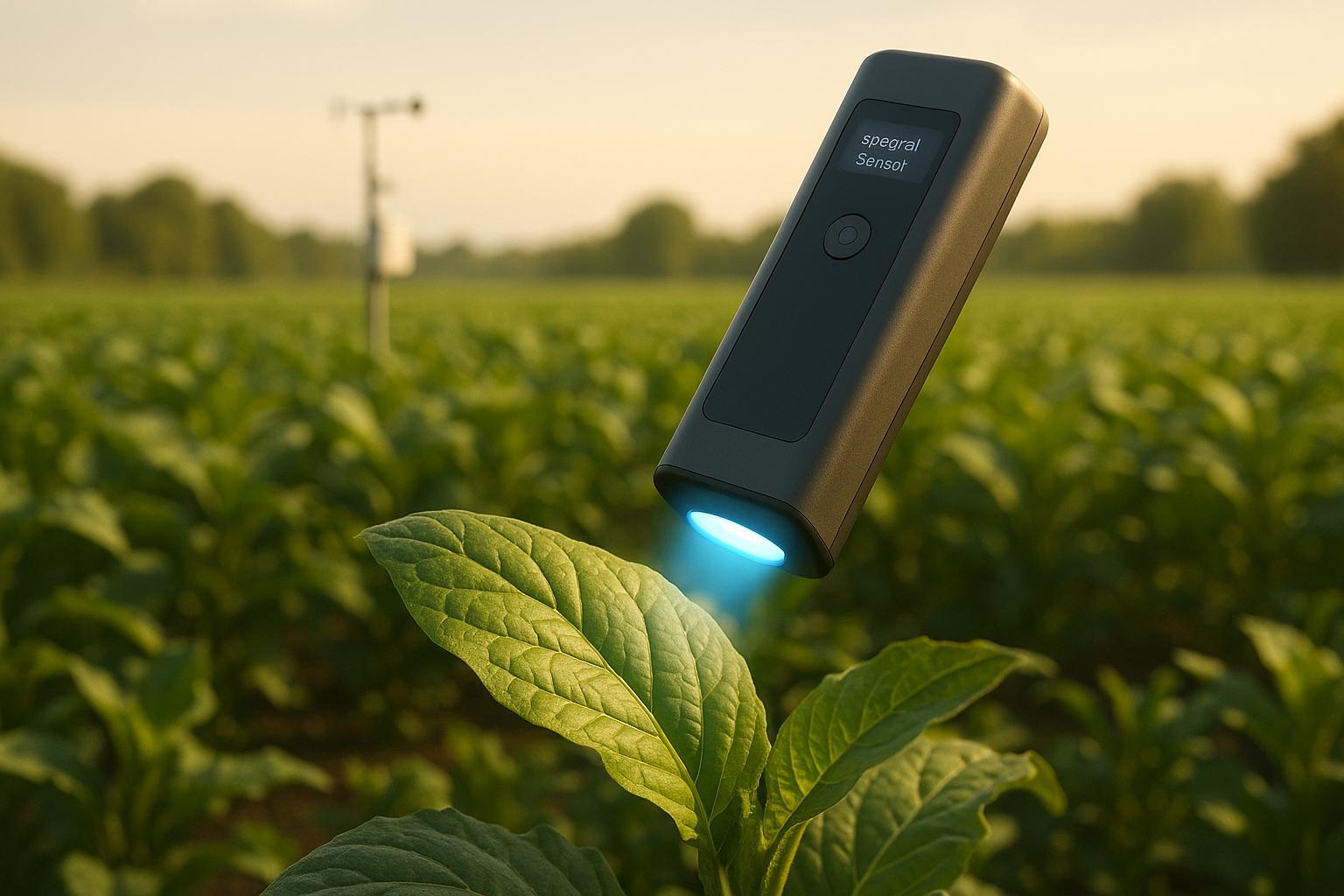
Data Fusion for Plant Disease Detection
Explore how data fusion combines spectral and environmental data to enhance plant disease detection, improving accuracy and early diagnosis.

Unlocking Creativity: Top AI Landscape Generator Tools for Stunning Virtual Environments
Discover the power of AI landscape generators to create realistic and customizable virtual landscapes. Explore the benefits, top online tools, and expert tips for designing breathtaking terrains effortlessly.

AI and Edge Computing: Transforming Pest Management
Explore how AI and edge computing are revolutionizing pest management, boosting crop yields while minimizing pesticide use and costs.
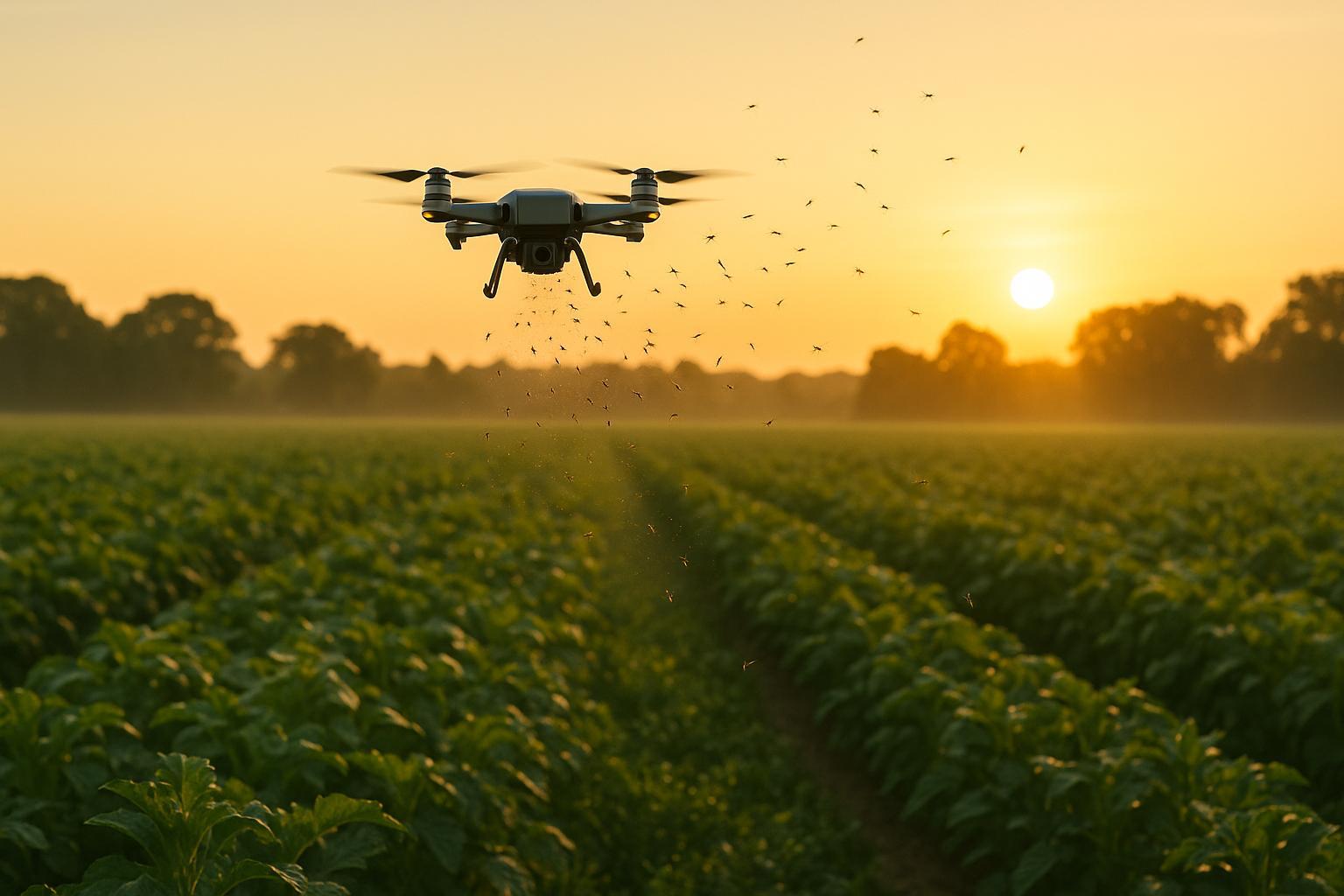
AI Timing for Parasitoid Releases
AI enhances the timing of parasitoid releases for pest control, improving effectiveness and reducing costs through data-driven insights.
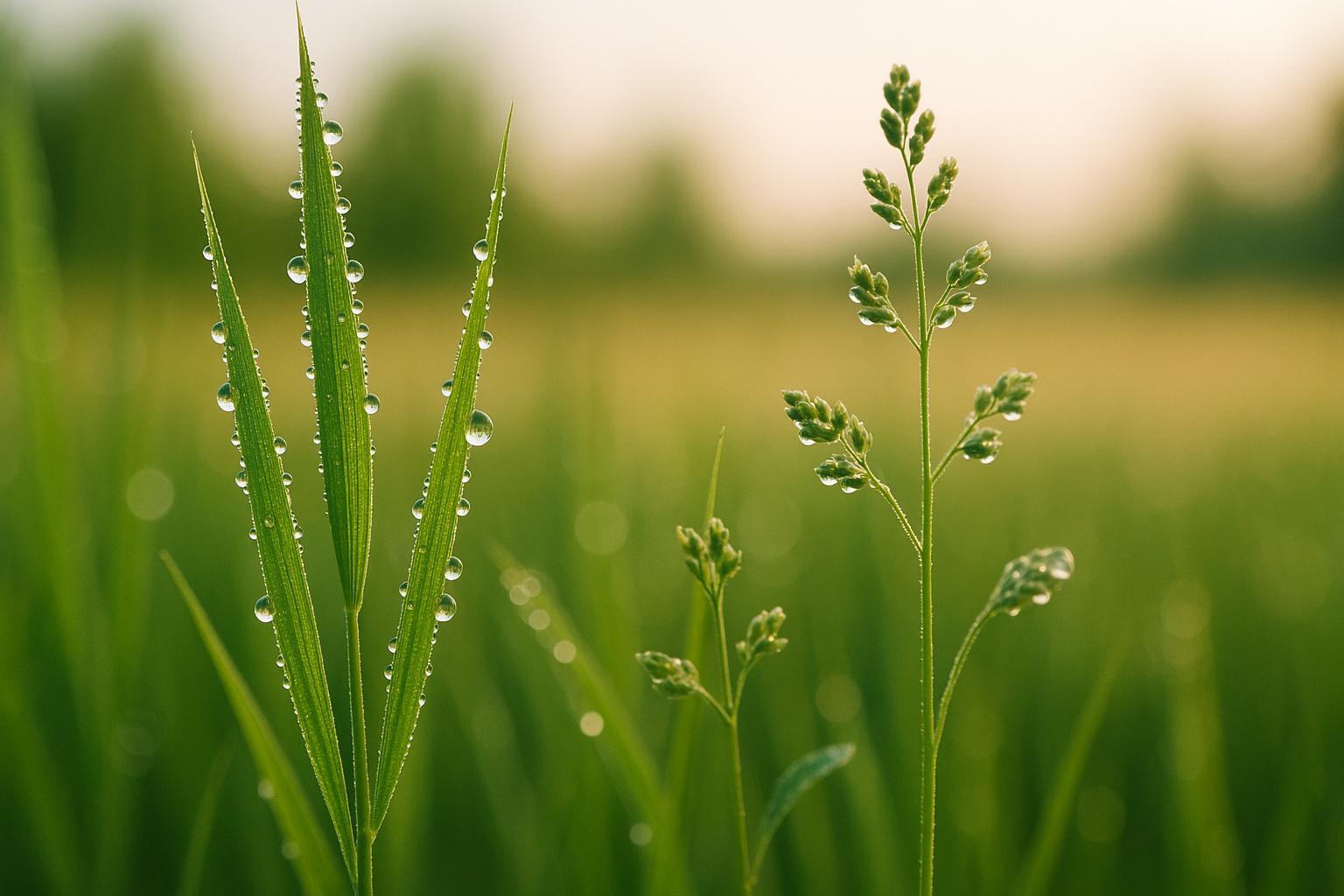
Impact of Droplet Size on Herbicide Efficacy
Understanding droplet size is crucial for optimizing herbicide effectiveness, balancing coverage, drift, and environmental impact.
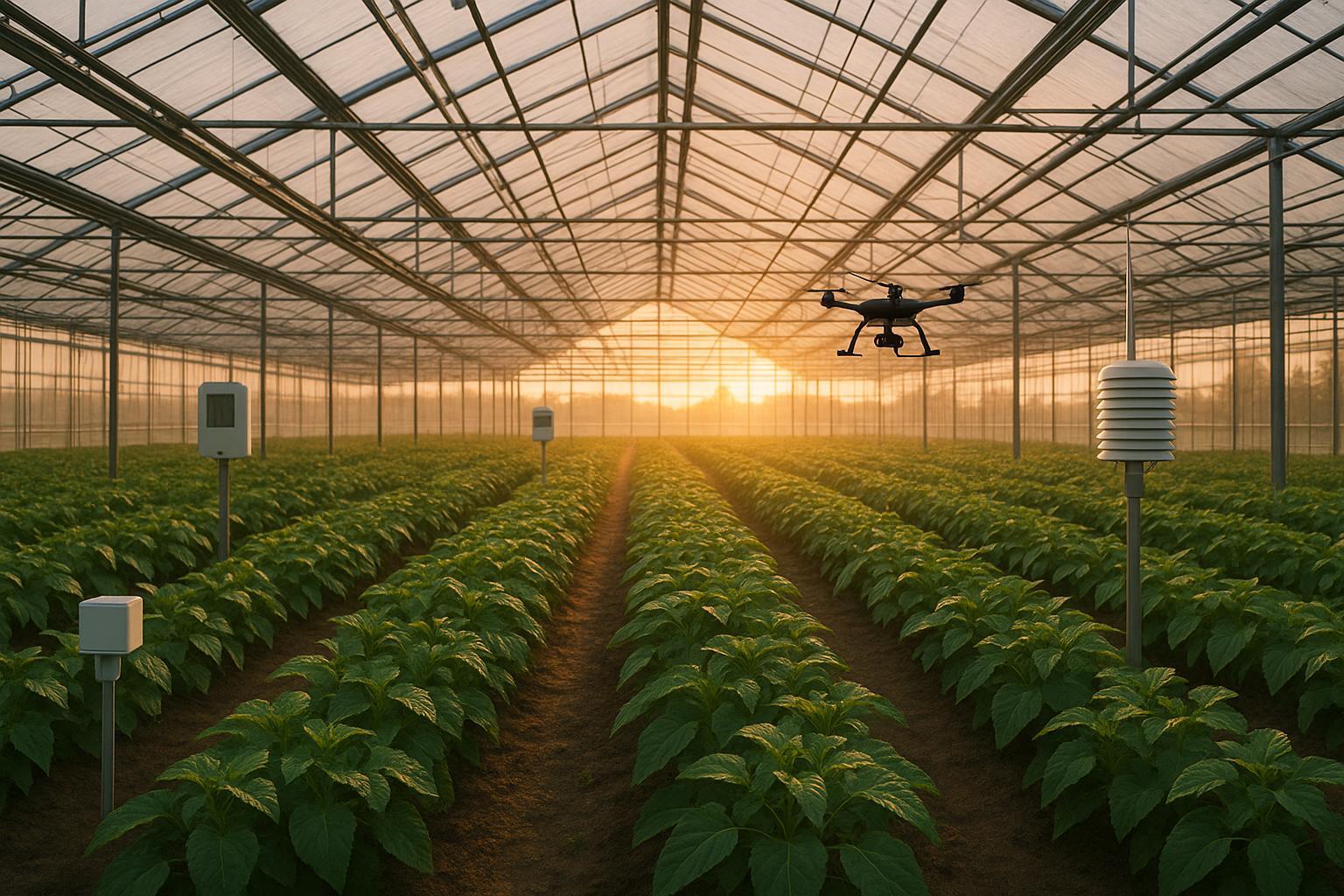
IoT in Biocontrol: Case Studies
Explore how IoT technology is revolutionizing pest management through precision, efficiency, and sustainable practices in agriculture and gardening.